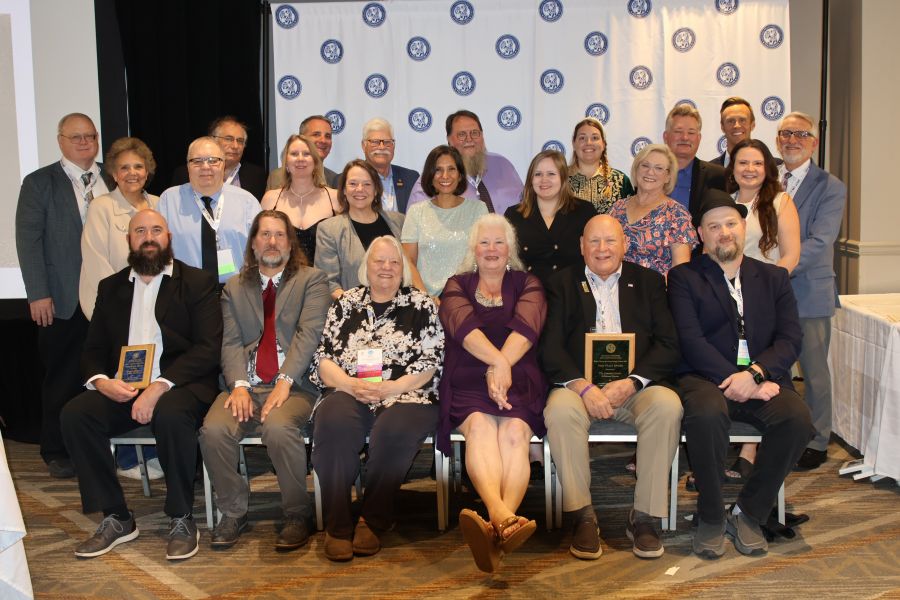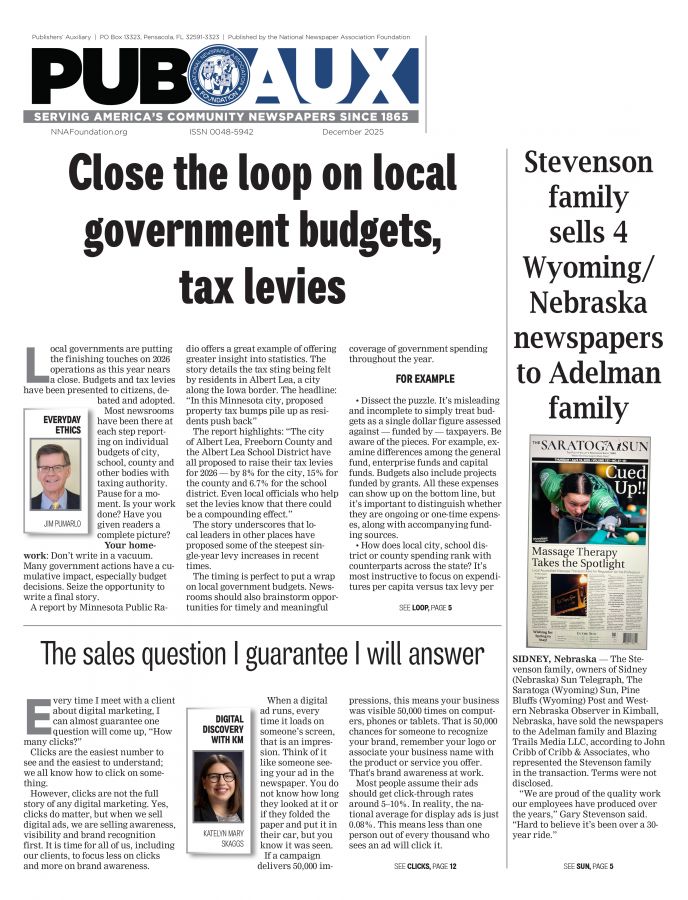Omissions as damaging as glaring errors to credibility
Jim Pumarlo
Dec 1, 2023


Newsrooms collectively cringe at the obvious errors when an edition rolls off the presses or is posted online with mistakes: a misspelled word in a headline, especially on Page 1, a wrong score in a sporting event, an incorrect date of an upcoming event.
Most miscues are acknowledged, but the original mistake has taken its toll on credibility. That can be especially damaging in today’s challenging media landscape when readership share is at a premium.
The above examples and any number of other errors are easy to spot. But also scrutinize your reporting for instances of omissions that can be equally harmful to your newspaper’s integrity.
Consider, for example, when someone speaks up at a public meeting and unleashes criticism about an individual or organization. Reporters have little difficulty presenting a balanced report if the accused is at the meeting. But what happens if the individual is not present? And what if deadlines do not permit time to get the other side of the argument?
It’s the classic case of a “single source” story. These reports are no doubt the easiest to write, and they also will prompt calls of “foul play” from readers for good reason.
Consider this editor’s note, which prefaced a story.
Note: The following article pertains to a presentation that represented one side of a highly controversial topic. Representatives for the alternative position were not available to contest or counter statements made and statistics shared. As such, that perspective is not a component of this report.
Kudos to the staff for acknowledging the shortcomings in its report, but it could have done better to earn its readers’ trust.
The editor’s note — the newspaper’s lack of initiative in pursuing and presenting the other side of the story — is rather remarkable in today’s 24/7 communications landscape. Multiple avenues are available to get the opposing view, from picking up the telephone to sending an email to checking out organization websites.
Blind-sided attacks are becoming all too common at meetings of government bodies. Newsrooms, as the clearinghouse of information in your communities, are often in perfect position to anticipate the circumstances and double down your efforts to present all sides of a story. Brainstorming at a staff meeting can reveal additional opportunities for broader coverage with multiple voices.
Example: A school board is prepared to act on a recommendation to switch from half-day to all-day kindergarten; the packet of materials accompanying the agenda details the reasons. A preview of the meeting is a chance to provide “pro” and “con” arguments, including interviews with several individuals. Follow-up reports on a variety of board actions present similar opportunities.
REVIEW OTHER EVERYDAY COVERAGE IN YOUR NEWSPAPERS
A community’s selection of a “citizen of the year” is an automatic feature story — usually a one-on-one sit-down with the honoree. Inject some flavor to the story by including comments from other individuals.
A big-box retailer comes into a town with great fanfare. A sidebar is appropriate to capture the sentiments of those who believe existing local retailers will be helped or hindered.
Most items in police blotters are sufficiently summarized in a few sentences. On occasion, take the time to quiz police on some incidents, and the circumstances can lead to an interesting story.
Tracking down all the voices — all the perspectives — of a story is just the first step, however. Two other points are important in the spirit of fairness.
First, give the opposing voices equal prominence. Court proceedings are a great example. In other words, don’t put the prosecutor’s arguments on page one and bury the defense’s rebuttal on the jump page. Reader attention is limited on the web, too; present the opposing viewpoints in the first few paragraphs.
Second, don’t be afraid to hold a story if it means delivering a more complete — and fairer — report. That’s especially the case with nondaily newspapers, where
it can be a few days to a week before readers receive the “other side.” In these cases, the web is a great friend. Newspapers can wait a few hours to pursue all the voices and still deliver a timely report.
The instructive to seek all perspectives of dialogue at government meetings is especially important today as newsrooms deal with diminished resources. Reporters increasingly monitor meetings livestream with no ability for immediate follow-up with individuals.
Seeking and incorporating the many varied — yet pertinent — voices in a story is not always easy. It can take time and hard work – solid journalism that benefits the newspaper and readers alike.
Jim Pumarlo is former editor of the Red Wing (Minnesota) Republican Eagle. He writes, speaks and provides training on community newsroom success strategies. He is author of “Journalism Primer: A Guide to Community News Coverage,” “Votes and Quotes: A Guide to Outstanding Election Coverage” and “Bad News and Good Judgment: A Guide to Reporting on Sensitive Issues in Small-Town Newspapers.” He can be reached at www.pumarlo.com and welcomes comments and questions at jim@pumarlo.com.









